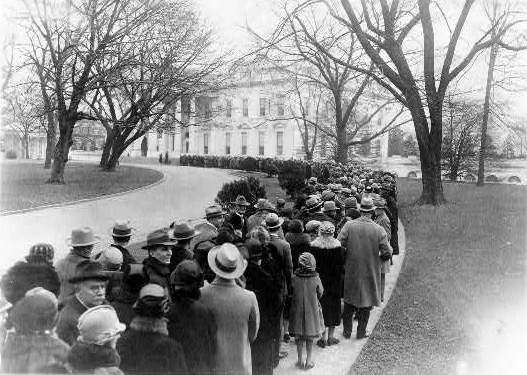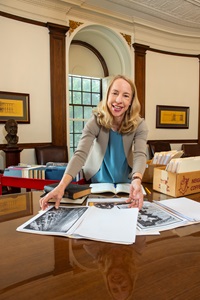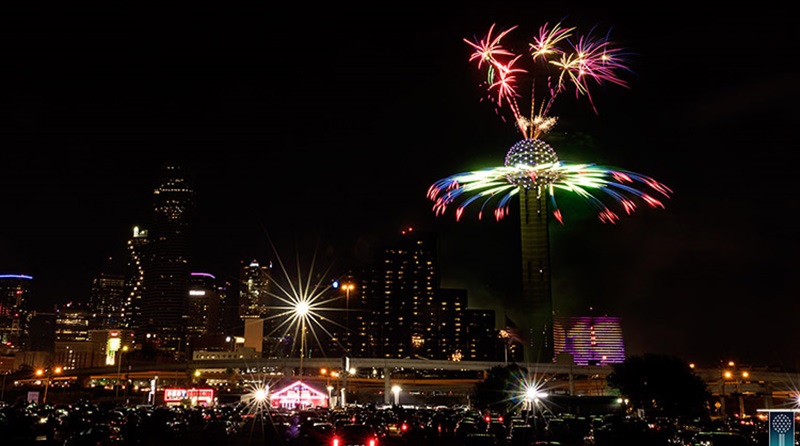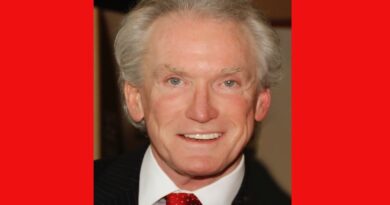SMU Historian Tackles U.S. New Year’s Traditions
New Year’s in the United States hasn’t always been celebrated with fireworks and champagne toasts.
SMU cultural historian Alexis McCrossen’s forthcoming book, Time’s Touchstone: The New Year in American Life, reveals what New Year’s has meant to Americans since George Washington was president.
Who knew the U.S. president once invited all Americans to a New Year’s Day open house?
Here are five things you may not know about the history of New Year’s celebrations in the United States.

PHOTO: Courtesy Library of Congress
- For 140 years, the biggest New Year’s party in America was at the White House on New Year’s Day. George Washington hosted the first President’s New Year’s Day reception in Philadelphia in 1790. Herbert Hoover hosted the last one in 1932 at the White House. During the Civil War, U.S. President Abraham Lincoln hosted a reception in the White House, and Jefferson Davis, president of the Confederate States of America, hosted one at the White House of the Confederacy in Richmond, Virginia.
- Until the 1850s, Americans gave more New Year’s gifts than Christmas gifts. Before that time, Americans gave each other small tokens to welcome the New Year, while Christmas gifts were unusual. Seeing Christmas as an opportunity to increase business, merchants, including confectioners, bakers, booksellers, toy makers and department stores, encouraged Americans to decorate, feast and give gifts at Christmas. The custom caught on, such that by the 1870s Christmas was nearly synonymous with presents.
- More enslaved people were separated from their families on New Year’s Day than on any other day of the year. They called it “Heartbreak Day.” Across the South until the Civil War New Year’s Day was “hiring day.” On Jan. 1, enslavers hired out for the coming year the people they had enslaved, including young children who were then separated from their families. On Jan. 1, 1863, New Year’s Day became “Freedom’s Day” when Lincoln signed the Emancipation Proclamation.
- Americans started celebrating on New Year’s Eve in the 1890s. With numerous public clocks showing the time and electricity illuminating the streets, urban Americans began to celebrate in anticipation of the exact moment — midnight — when the New Year arrived. The fireworks and public festivities that were meant to bid farewell to the old year and welcome the new one drew Americans young and old, rich and poor, into the streets, squares and commercial entertainment venues like ballrooms and restaurants, for evenings filled with fun and a bit of mischief too.
- After the first ball dropped in New York City’s Times Square in 1908, ever larger crowds gathered for it with each passing year. Radio and television began broadcasting the ball drop in the 1950s, but the crowd’s countdown didn’t began until the late-1970s.

SMU history professor Alexis McCrossen’s work is part of an emerging area in historical research, temporal studies, a new way of looking at the past through the study of the measurement, importance and recognition of time. Her forthcoming book will be published by the University of Texas Press with support from the National Endowment for the Humanities.
Previous books include Marking Modern Times: Clocks, Watches and Other Timekeepers in the United States (2013) and Holy Day, Holiday: The American Sunday (2000).








